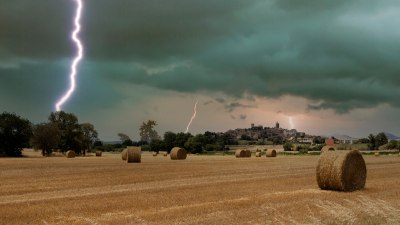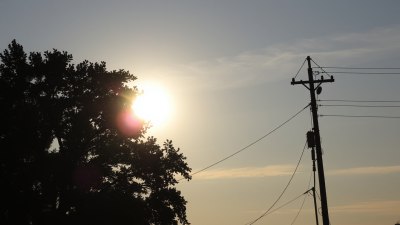How Nature’s Forecast Encourages Human Optimism
Explore how nature’s patterns and cycles inspire human optimism and shape our hopeful outlook on life.

Throughout history, humans have looked to nature not only for sustenance and shelter but also for guidance and hope. The natural world, with its predictable cycles and rhythms, often serves as a metaphorical forecast, subtly encouraging an optimistic outlook even in challenging times. From the changing seasons to the dawn's first light, nature embodies resilience and renewal, reminding us continually that difficult periods are often followed by rejuvenation and growth.
One of the most evident ways nature fosters human optimism is through the cycle of seasons. Each season carries its distinct characteristics, yet the transition from one to another brings a powerful message of change and continuity. Winter, often associated with barrenness and cold, is inevitably followed by spring, a time of blooming, warmth, and new beginnings. This yearly transformation encourages the belief that hard times are temporary and will give way to better days.
Aside from visual cues, nature provides numerous auditory and tactile signals that act as reassuring forecasts. The song of morning birds, the gentle rustling of leaves, and the warmth of sunlight on the skin all serve as sensory reminders of life's persistence and the promise of renewal. These experiences can bring comfort and promote a positive mindset, fostering emotional resilience in the face of adversity.
Humans are naturally attuned to environmental cues, many of which have been vital for our survival over millennia. These cues allow us to predict weather, anticipate food availability, and plan for life’s uncertainties. For instance, the observation of animal behavior before a storm, or the blooming of particular flowers signaling seasonal shifts, directly impacts our expectations and confidence in the future. This intricate relationship between humans and their natural surroundings cultivates a hopeful anticipation embedded in daily life.
Moreover, observing nature’s resilience inspires optimism in human endeavors. Plants recovering after wildfires, animals rebuilding habitats after destruction, and ecosystems slowly restoring balance all demonstrate perseverance. Witnessing such phenomena encourages us to believe in recovery and progress despite setbacks, fostering hope that challenges can be overcome through patience and effort.
The concept of natural cycles is deeply embedded in many cultures' philosophies and spiritual beliefs, emphasizing renewal and growth. Ancient rituals often aligned with solstices and equinoxes, celebrating the turning points of nature’s calendar. These moments not only mark physical changes in the environment but also serve as symbolic renewals, rallying human spirits to embrace optimism and new opportunities.
Additionally, scientific understanding of natural patterns further reinforces human optimism. Ecologists study succession—the natural regrowth process of ecosystems disturbed by events like fires or storms—to predict recovery timelines and assess ecosystem health. This knowledge reassures communities that environmental disruptions are part of a larger, restorative process, promoting confidence in both nature's resilience and humanity’s capacity to adapt and rebuild.
On a psychological level, exposure to natural environments has been shown to reduce stress, improve mood, and enhance cognitive function. This phenomenon, sometimes called 'biophilia,' suggests an innate human affinity for nature that supports emotional well-being. In practice, spending time outdoors or even viewing natural scenes can cultivate a positive attitude, fueling optimism about personal and collective futures.
Intertwined with environmental cues, the unpredictable beauty of nature—the sudden bloom of a wildflower, the appearance of a rainbow after rain—offers moments of serendipity that spark joy and hope. These spontaneous experiences remind individuals that despite life’s uncertainties, beauty and surprise persist, encouraging an open and optimistic view of the world.
Furthermore, narratives drawn from natural phenomena often find their way into literature, art, and mythology, reinforcing optimism through storytelling. Tales of the phoenix rising from ashes, the cyclical return of the sun, or the patience of the oak growing through seasons embody themes of fearlessness, rebirth, and hope that resonate deeply with human consciousness and inspire positive perspectives.
In urban settings, where contact with nature can be limited, intentional incorporation of green spaces and natural elements in city planning reflects an acknowledgment of nature's psychological benefits. Parks, community gardens, and green rooftops provide urban dwellers with opportunities to connect with natural cycles, thus nurturing optimism and improving quality of life despite metropolitan challenges.
Additionally, nature’s role in climate and environmental education contributes to fostering optimism by empowering individuals and communities to engage in stewardship actively. Understanding the impact of human actions on the environment inspires hope through collective efforts toward sustainability, conservation, and restoration projects, reinforcing the belief that positive change is achievable.
Seasonal festivals and traditions celebrated worldwide underscore the powerful link between nature's patterns and human emotional cycles, often coinciding with planting or harvest times. These communal experiences not only honor nature’s bounty but also provide collective uplift, reinforcing social bonds and shared optimism about future prosperity.
Psychologists studying human responses to nature have found that exposure to natural sights and sounds increases feelings of awe and connectedness, emotions strongly linked to optimism and well-being. This connection encourages individuals to adopt a broader perspective, reducing anxiety about immediate problems and fostering a hopeful outlook toward long-term possibilities.
Technological advancements have enabled deeper insights into weather patterns, ecological cycles, and natural phenomena, enhancing humanity’s ability to predict environmental changes. Reliable forecasts reduce uncertainty and allow people to plan ahead, directly influencing the sense of security and optimism. Daily weather reports, astronomy predictions, and agricultural advisories exemplify how nature’s forecast shapes human expectations and confidence.
Moreover, stories of environmental recovery after man-made or natural disasters highlight nature’s capacity for regeneration and resiliency. These examples serve as powerful symbols of hope, inspiring environmental activism and personal perseverance, reminding us that renewal is always possible.
The symbiotic relationship between human culture and nature also manifests in artistic expression, where natural scenes often symbolize hope and renewal. Iconic paintings, poetry, and music reflecting the changing seasons or natural events act as cultural reminders that optimism is both a natural and cultivated response to life’s cycles.
Finally, the future of human optimism is increasingly linked to how we understand and interact with nature in an era of global change. As environmental challenges become more acute, recognizing nature’s enduring rhythms can motivate sustainable choices and foster collective hope, guiding societies toward resilient and hopeful futures.
In sum, nature’s forecast - through its cycles, signs, and patterns—perpetuates a sense of optimism deeply ingrained in human consciousness. It serves not only as a practical guide for survival but also as a source of emotional resilience and hope, encouraging humanity to look forward with confidence, despite the uncertainties of life.











